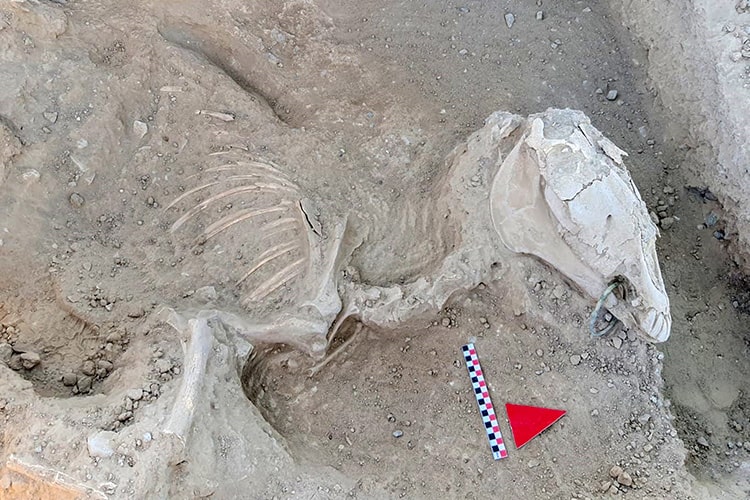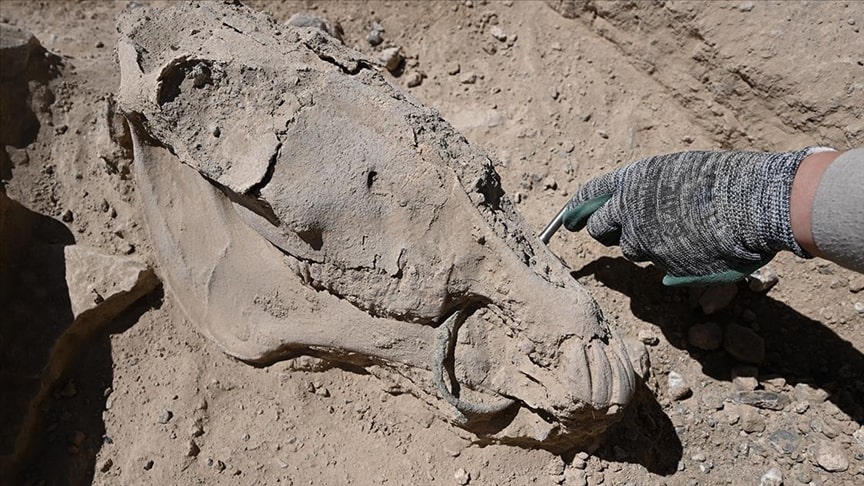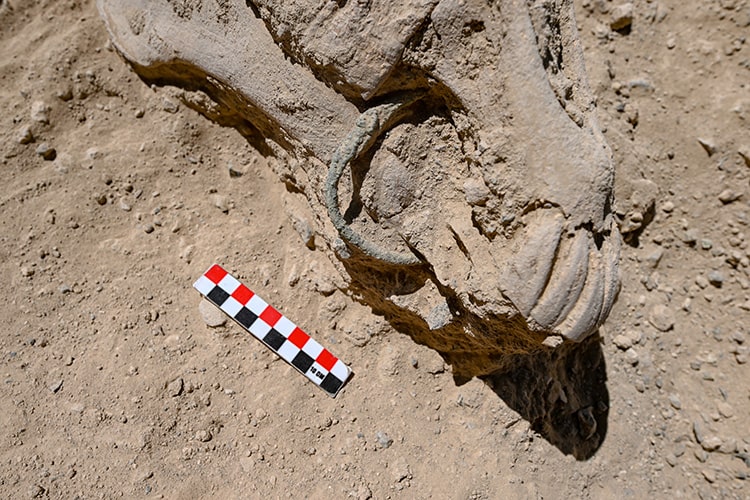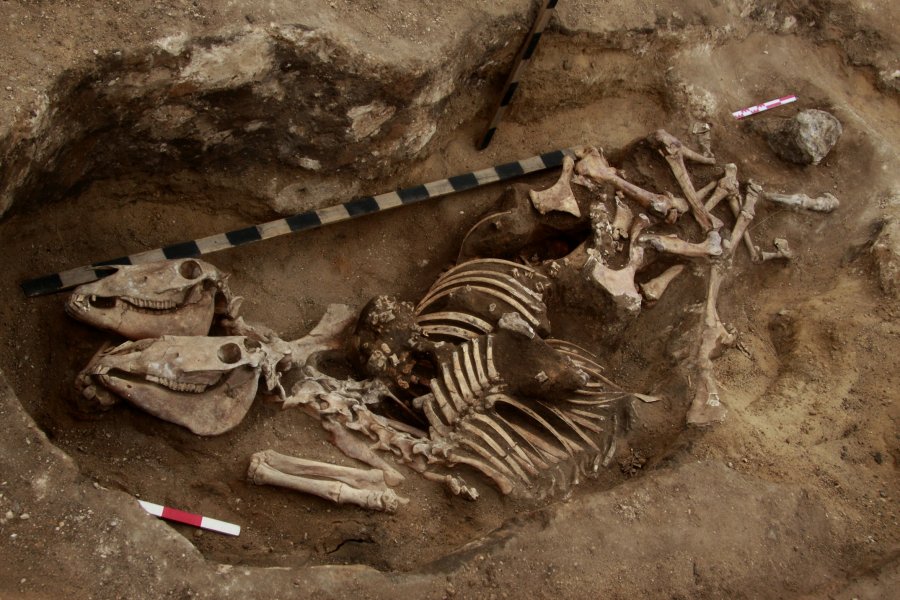At the Van Cavustepe fortress, archaeologists have uncovered a horse skeleton dating back to the Urartian era, featuring a bronze curb bit—a metal device inserted into its mouth for guiding the horse. This marks the first-ever discovery of a ring-shaped curb bit in Urartian history.

Located 25 kilometers southeast of Van on the Van-Hakkari-Iran route in the Gürpınar District, Çavuştepe neighborhood and Çavuştepe Castle boast a rich history dating back to the eighth century BC when it was constructed by Sarduri II, the king of Urartus.
The initial excavations at Çavuştepe Castle commenced in 1961 under the supervision of Prof. Dr. Afif Erzen and spanned 25 years until 1986. A subsequent phase of excavations was initiated in 2014, led by Prof. Dr. Rafet Çavuşoğlu.
Ongoing excavations focus on the necropolis region north of Çavuştepe Castle and the castle itself.
This year’s noteworthy discovery at the site includes a horse skeleton with a bronze curb bit—a metal device used to control the horse’s movements. This finding occurred in the same location where a skeleton believed to belong to the Urartian ruling elite was unearthed the previous year.

Speaking to an AA correspondent, Prof. Dr. Çavuşoğlu provided insights into the ongoing restoration and excavation efforts at the castle and necropolis area, sharing the following information:
“In our work this year, as is the case every year, we made a significant new discovery. We uncovered a ring-shaped bit made of bronze, inserted into the jaw of a horse. This finding holds substantial importance in Urartian archaeology as it represents the first instance of such an artifact being unearthed. In the past, we have found similar rings used as armlets and bracelets on human skeletons. However, this new discovery is larger in size and is positioned in the middle of the horse’s mouth. We hypothesize that it was employed by the horse’s owner to exert more effective control over the animal. This marks the first time we have identified a bit in the form of a ring in Urartian history. It underscores the significant role that horses played in Urartian society. These findings suggest that this location belonged to a ruling class.”

Assoc. Prof. Dr. Hakan Yılmaz, a faculty member in the Archaeology Department, added, “The skull and lower jaw of the horse are well-preserved. We have identified it as an adult horse. This discovery marks a pioneering moment in Turkey. Further analysis will be conducted in the laboratory. Through this revelation, we are substantiating the claim that this site belonged to a ruling class. Given the expansive nature of the area, we anticipate uncovering more significant discoveries. The ongoing findings continue to generate excitement among our team.”

The necropolis (cemetery) of the castle is situated approximately 1 km north of the castle. Numerous illicit excavations were conducted here prior to 2017, resulting in significant damage to the Urartian Cemetery. During archaeological excavations, critically important information about the burial customs of Urartian society was gleaned.